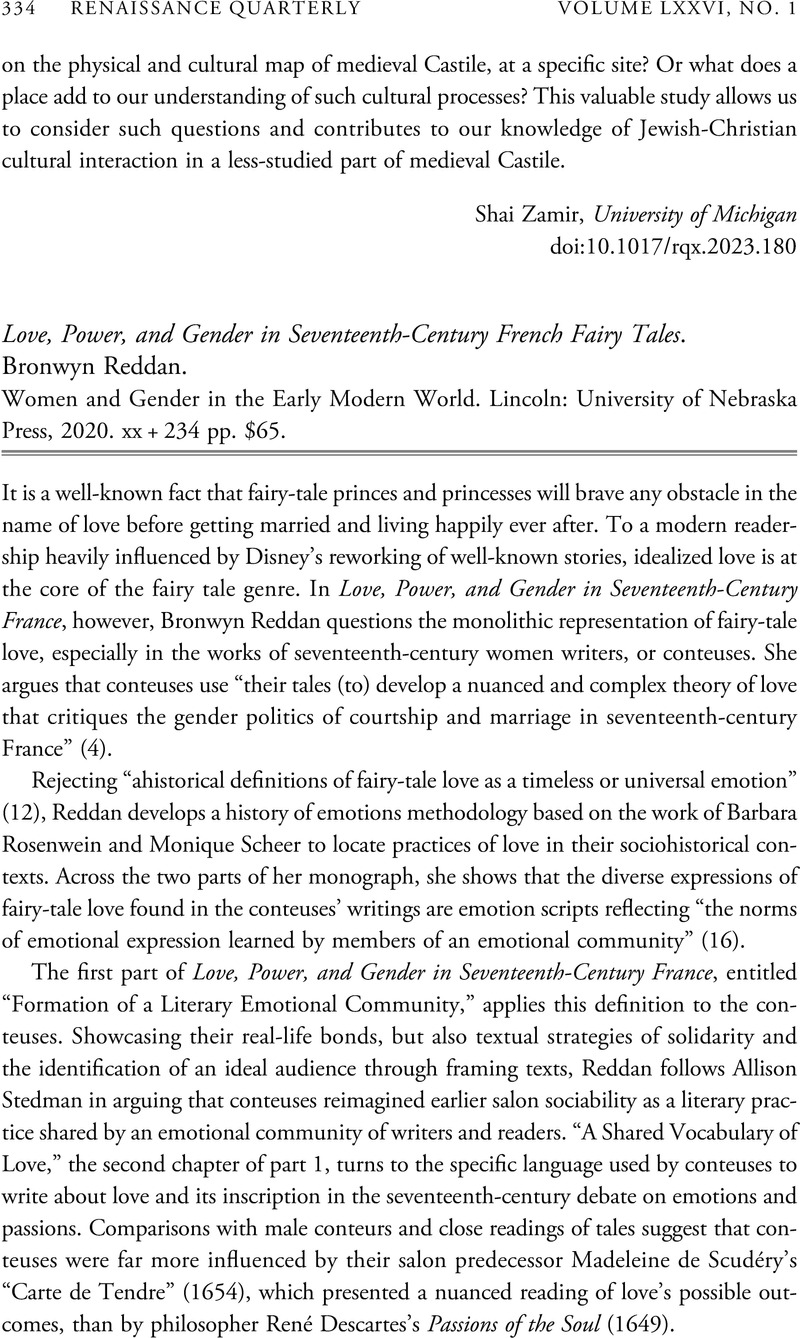No CrossRef data available.
Article contents
Love, Power, and Gender in Seventeenth-Century French Fairy Tales. Bronwyn Reddan. Women and Gender in the Early Modern World. Lincoln: University of Nebraska Press, 2020. xx + 234 pp. $65.
Review products
Love, Power, and Gender in Seventeenth-Century French Fairy Tales. Bronwyn Reddan. Women and Gender in the Early Modern World. Lincoln: University of Nebraska Press, 2020. xx + 234 pp. $65.
Published online by Cambridge University Press: 17 April 2023
Abstract
An abstract is not available for this content so a preview has been provided. Please use the Get access link above for information on how to access this content.

- Type
- Review
- Information
- Copyright
- Copyright © The Author(s), 2023. Published by the Renaissance Society of America



